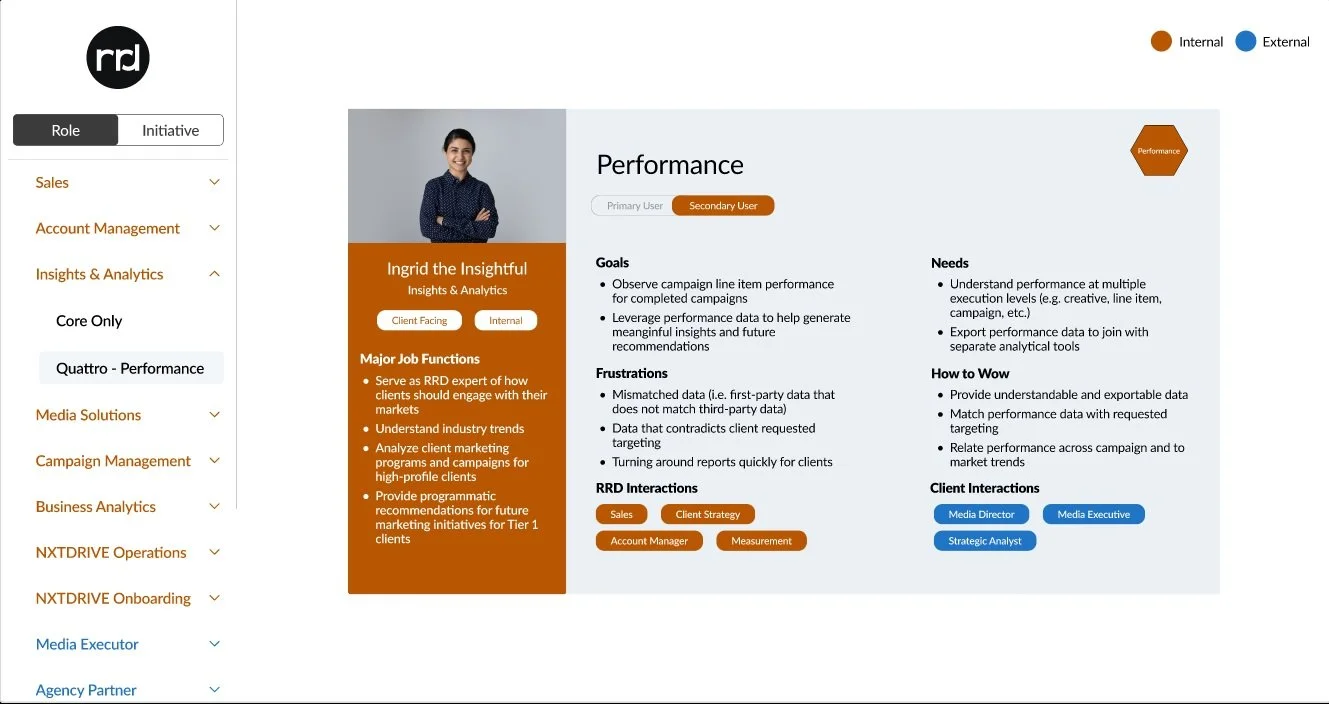Dynamic Personas
Background
Research Teams are often tasked with the production of personas to facilitate the discovery portion of a project. Personas do help the team understand the users in the space by developing knowledge of their roles and cultivating a sense of empathy for those users.
However, the work to develop solid and beneficial personas sometimes outweigh the seen benefit. Coupled with the need to revise and reproduce personas for new projects or initiatives, our team sought to find a better way to develop and maintain a persona library.
Objective
Develop a dynamic persona repository that could be leveraged for multiple projects and be updated dynamically.
-
UX
Product
Engineering
-
Internal employees
External users
-
UX
Product
Something Interesting
Personas and proto-personas are different approaches to the generation of a persona library. Developing personas requires a more detailed and thorough process of discovery and data analysis. Proto-personas, on the other hand, can be generated quickly without the backing of detailed discovery. While proto-personas are often quicker, the costs and benefits of using proto-personas compared to personas need to be considered before choosing the right approach for your project.
Method
By using a variety of techniques, processes, and actions, the Research Team and I sought to understand and enhance the tools for core offering operations. Techniques were vast and varied, but primarily fell into one of three functional areas:
Discovery
Generative
Evaluative
Procedure: Discovery
Our main goals for this discovery were rooted in observational study as we set out to map the current internal processes and then combine that with competitive offerings. As our solution was going to change the behavior of our core operational teams, we had to have a firm understanding of each step and pain point, conducting detailed task analysis that would drive shared service blueprints. These were complemented by Client Satisfaction and Internal Employee survey initiatives that we conducted periodically.
Methods:
Contextual Inquiry
Task Analysis
Competitive Analysis
Service Blueprinting
Journey Mapping
Longitudinal Survey Evaluation
Focus Groups
Workshop Facilitation
Heuristic Evaluation
Service Blueprint
Client Satisfaction Survey
Competitive Analysis
Procedure: Generative
With an understanding of the current space, our teams pivoted towards materializing ideas and needs through various generative exercises. We brought users directly into our process by giving them multiple opportunities for generating functional requirements, identifying pain points, and drawing proposed solutions.
Participatory Design Facilitation
Need Analysis/JTBD
Card Sorting
Functional Requirements Generation
Interaction Design Wireframing/Wireflowing
Functional Needs Analysis/Card Sorting
Participatory Design
Procedure: Evaluative
The implementation of a new operational backbone for the company is one that is not launched lightly. Ongoing user-testing and validation checks were constant as we periodically and continuously vetted and validated designs and solutions.
Design Validation
User Testing
Process Validation
Scenario Validation
Information Architecture Testing
Alpha/Beta/UAT
Behavior Tracking & Analysis
Information Architecture Testing
Prototype Testing
Alpha Testing in Staging
Results & Discussion
Through constant iteration and implementation, several applications and functionalities within the unified platform have been implemented. This massive pivot in the corporate offering is continually being implemented but launch is schedule for the end of 2025.
Gains have already been realized in major KPI measures outline in Hypothesis(a) with improvements in 1) Usability, 2) Satisfaction, 3) Error Rate, and 4) Productivity
